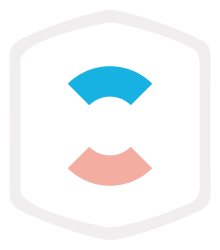Learning Objectives
Introduction
The goal of this set of learning objectives is to dive deeper into the role of the Product Owner, the core competencies and day-to-day activities required for success. Although Product Owner is a Scrum role, almost all of the techniques are framework agnostic and, thus, can be applied on any agile team by a Product Owner, or Product Manager. This class goes beyond mere theory and explores the application of many powerful techniques.
Course Format
The course can be taught in multiple formats, and we encourage educators to create an offering that is most suited to their client’s needs. It can be a live instructor-led class, self-paced online, or hybrid. It is up to educators to ensure that the learning objectives are met by every student. In order to maintain quality, we will gather feedback from every student. Suggested learning time, 16 hours.
Course Delivery
This class may be designed and delivered by any approved educator holding the E-BAC, P-BAC, or A-BAC credential.
Course Prerequisites
A sound overview of Agile product development and/or Scrum is advised. Hands-on experience, and/or one of the following courses are recommended; BAA Agile Fundamentals, BAA Scrum Fundamentals, or a similar training from a reputable organization.
Licensing Information
These learning objectives were created by Karim Harbott and Sohrab Salimi for the Business Agility Association. This work is licensed under the Creative Commons Attribution-NonCommercial-NoDerivatives 4.0 International License. To view a copy of this license, visit http://creativecommons.org/licenses/by-nc-nd/4.0/.
Learning Objectives
1 – Lean, Scrum and Agile Overview
The purpose of this learning objective is to provide a solid foundation to the creation of the Manifesto for Agile Software Development and the key theories behind it.
- Outline at least three key challenges faced when using traditional product development approaches in a fast-paced, uncertain, complex environment.
- List at least three benefits of small batches when working in uncertain environments.
- Explain the four values, and summarize the twelve principles, of the Manifesto for Agile Software Development.
- Describe the roles, artifacts, commitments, and events of Scrum, and the purpose of each.
- Describe empirical process control, and explain the various means by which Scrum provides greater transparency, and opportunities for inspection and adaptation.
2 – Product Strategy & Business Models
The purpose of this learning objective is to outline the main ways that Scrum Masters can support the Product Owner.
- Explain the importance of a compelling product vision and describe a technique for creating one.
- Describe at least two techniques for building empathy with customers and understanding their main needs, desires and pains.
- Describe at least two types of product roadmap, and list the pros and cons of each.
- Describe at least one technique for mapping out the business model of a product.
- Define product strategy and explain why it is vital for Product Owners to craft one.
- Explain at least two ways products can achieve a competitive advantage in their chosen area.
3 – Product Discovery & Testing Assumptions
The purpose of this learning objective is to outline the main ways that Scrum Masters can support the Developers.
- Initial product discovery.
- Continuous product discovery.
- Aligning business and customer value.
- Uncovering opportunities.
- Creating and validating solutions.
4 – Facilitation & Stakeholder Engagement
The purpose of this learning objective is to outline the main ways that Scrum Masters can support the wider organization.
- Managing internal and external stakeholders.
- Facilitating.
5 – Team Collaboration & Product Backlog Management
The intent of this learning objective is to align on the importance of leadership taking a systemic approach to enabling agility across the wider organization.
- Ensuring Product Backlog Items are clearly defined.
- Splitting Items.
- Elaborating items.
- Gaining a shared understanding with the Developers.
6 – Planning & Forecasting
The intent of this learning objective is to outline how organizations could undertake planning and forecasting product development, and engage a variety of stakeholders during the development process to ensure alignment and manage expectations.

